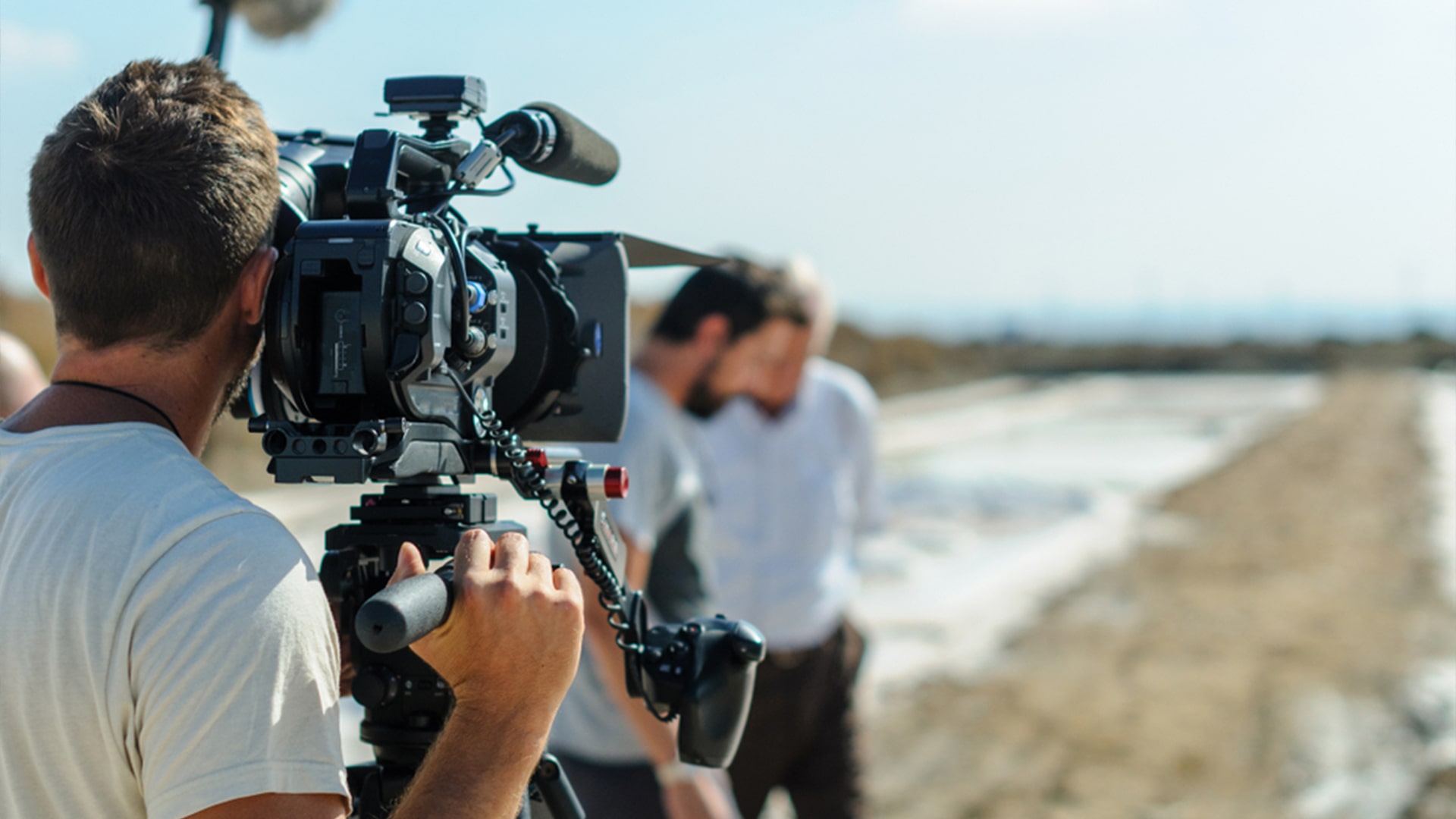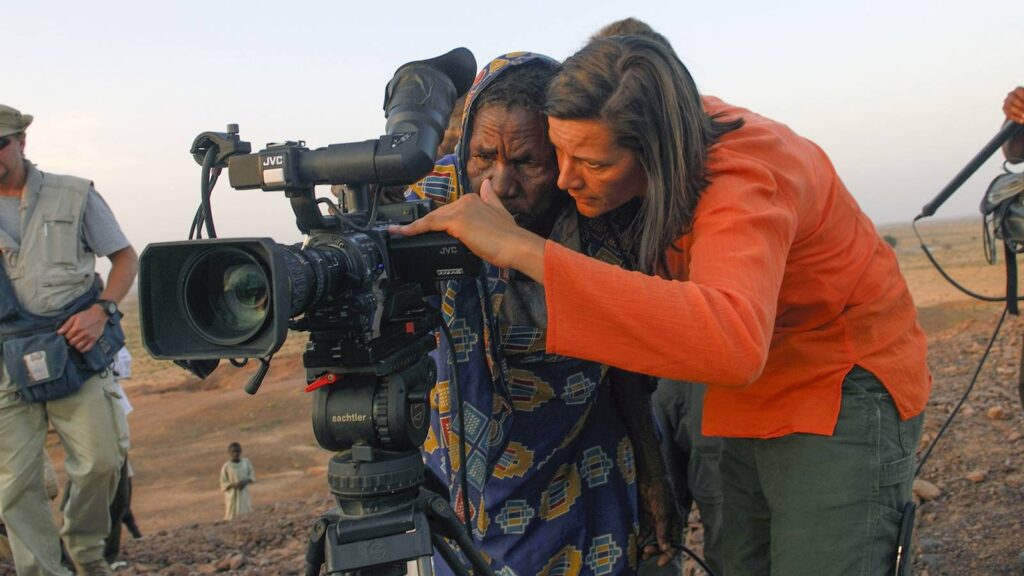Documentaries are a powerful medium of storytelling that allows filmmakers to delve into real-world events, cultures, historical moments, and social issues. One of the key elements that elevate the impact of documentaries is narration. Narration serves as a guiding voice that weaves the narrative together, connects the audience with the subject matter, and enhances the viewing experience.
1: Providing Context and Background
Why is narration used in documentaries? Narration serves as the invisible thread that weaves together the intricate tapestry of a documentary, guiding viewers on an exhilarating journey of discovery. Its purpose extends beyond mere storytelling; it is an essential tool that imparts context and background to every unfolding scene. Through a melodic blend of words, tone, and rhythm, the narration provides a steady hand ready to unravel complex concepts and historical events for those willing to embark on this captivating audiovisual odyssey.

It gives voice to the untold tales hidden within archival footage or interviews with experts, allowing us to grasp the significance of each moment captured on screen. The narrator’s professional yet engaging tone engenders trust in their authority while kindling curiosity within our minds—urging us forward into uncharted territories awaiting exploration. So why is narration used in documentaries? Its ability to transport us through time and space effortlessly transforms these factual accounts into immersive experiences that educate, inspire, and leave an indelible mark upon our souls.
2: Connecting Scenes and Themes
Narration, a powerful tool harnessed by filmmakers, serves as the vibrant thread that weaves together disparate scenes and themes within the complex tapestry of a documentary. Through its seamless integration, the narration provides an essential bridge between various film elements, guiding viewers on an exhilarating journey through time and space. Each word spoken allows for a deeper understanding of the subject matter at hand, offering context that might otherwise remain hidden amidst the myriad visuals unfolding before our eyes.
This carefully curated narrative voice acts as curator and conductor, orchestrating a symphony of sights and sounds to immerse us in the story. By expertly connecting these scenes and themes with articulate precision, narration transforms what could have been mere disjointed sequences into an engaging cinematic experience where every moment resonates with purposeful intentionality.
3: Emphasizing Key Points
Narration used in documentaries serves several crucial purposes, with the primary function being to emphasize key points and provide a guiding thread throughout the film. A carefully crafted narrative voice adds depth and coherence and enhances the overall viewing experience for audiences. Through this technique, directors can expertly weave together different storytelling elements – such as interviews, archival footage, or visuals – into a seamless whole that captures viewers’ attention from start to finish. The narration acts as an invisible hand guiding us through intricate narratives, elucidating complex concepts or historical events that may otherwise be challenging to comprehend fully.
It provides context and clarity while lending credibility and authority to the subject. By skillfully utilizing tone variation, inflection, and pacing within their delivery, narrators can evoke emotional responses within viewers – whether it is awe-inspiring wonderment or deep introspection – further enhancing engagement with the documentary’s central themes. In essence, narration brings cohesion and artistry to documentaries by emphasizing key information in an exciting yet professional manner.
4: Evoking Emotions and Empathy
Narration used in documentaries is a dynamic tool that propels viewers into an exhilarating realm of storytelling. With its power to evoke emotions and empathy, narration becomes the guiding force behind these captivating visual journeys. As we immerse ourselves in the tales spun by skilled narrators, our hearts are invigorated with profound sensations.
Whether recounting personal anecdotes or sharing historical facts, narration breathes life into the images unfolding before us, forging an indelible connection between the viewer and the subject matter. Through this masterful technique, audiences are transported across time and space, enabling them to witness extraordinary events through a lens of understanding and compassion. By skillfully weaving narratives laden with emotion and empathy, documentary filmmakers harness the potency of storytelling to ignite within their audience a burning desire for knowledge and social change—a testament to the artistry found within narration used in documentaries.
5: Providing a Unifying Voice
Documentary narration is a potent tool, seamlessly weaving together the narrative threads that would otherwise be left disjointed. It is an invisible hand guiding viewers through the intricate tapestry of facts and stories, creating a cohesive and engaging experience. A skilled narrator can captivate audiences with their voice alone, painting vivid pictures in our minds while expertly illuminating complex concepts. By providing a unifying voice, narration allows filmmakers to stitch various interviews, footage, and scenes into a seamless whole—a symphony of visual storytelling accompanied by melodic verbal exposition.
This harmonious blend enables us to delve deeper into the subject, effortlessly digesting information that might have felt overwhelming or fragmented. Hence, documentary narration serves not only as an informative tool but also as an artistic instrument that elevates these films from mere collections of raw footage to captivating cinematic mastery.
6: Filling Gaps in Visual Storytelling
Narration used in documentaries acts as the invisible thread that weaves together intricate visual storytelling, skillfully bridging the gaps and enhancing the viewing experience. As a masterful communication tool, narration allows us to delve into unexplored depths, guiding us through the labyrinthine maze of information with ease. It breathes life into mere images, painting vivid landscapes of knowledge within our minds. Like a symphony conductor directing an orchestra, narration orchestrates each scene effortlessly; it empowers viewers to immerse themselves fully in the narrative tapestry being spun before them.
Through its eloquent words and captivating cadence, narration ignites curiosity and engagement while preserving historical accuracy or recounting personal anecdotes from individuals involved in these real-life stories. Ultimately, documentary narration is a testament to our innate desire for understanding and connection – this essence propels us on a journey toward enlightenment and inspiration.
7: Adding Authoritative Voice
Narration used in documentaries serves as the authoritative voice that seamlessly weaves together the narrative fabric of these captivating films. Through this essential element, viewers are transported into a world where facts, stories, and emotions collide. The deliberate use of narration allows documentarians to guide their audience on an immersive journey, shedding light on complex subjects with clarity and depth. This powerful tool imparts knowledge and evokes emotion by compellingly delivering information. The carefully chosen words, delivered in a professional tone, resonate with viewers at a visceral level, inviting them to become active participants rather than passive observers.
Narration becomes the guiding compass leading audiences through uncharted territories or historical events long forgotten; it instills trust and adds credibility while immersing us in intriguing narratives crafted by talented filmmakers who understand the magic of storytelling. In essence, narration used in documentaries ignites our curiosity and fuels our desire for knowledge – it makes these films both educational and enthralling experiences like no other medium can offer.
8: Creating a Narrative Structure
Narration used in documentaries is an indispensable tool that breathes life into the storytelling process, guiding viewers as they embark on an exhilarating journey of knowledge and discovery. It serves as the connective tissue that weaves together various elements, transforming mere footage into captivating narratives. With its ability to transport audiences to different times and places, narration brings historical events back from obscurity or immerses us in remote corners of the world where our feet may never tread. Through skilled manipulation of tone, intonation, and pacing, it captivates our senses by evoking emotions ranging from suspenseful anticipation to heartwarming empathy.
By providing context and insights not readily apparent through visuals alone, narration bridges gaps in understanding while masterfully maintaining engagement throughout the film. Expertly crafted narrations add depth and layers to the subject matter; they compel us to question preconceived notions or inspire introspection within ourselves. The artistry behind narration lies in its seamless integration with stunning cinematography or thought-provoking interviews—working harmoniously like choreographed dancers on a grand stage—to deliver a powerful message capable of leaving lasting impressions upon individuals and society.

Why Choose Mike Spendley for Narration In Your Documentaries?
Why is narration used in documentaries? The answer lies within the power of storytelling. Narration serves as an essential tool, weaving together the intricate tapestry of information and emotions that make up a documentary. And when it comes to selecting the perfect narrator, Mike Spendley effortlessly rises above the rest. With his rich and mellifluous voice, he has an uncanny ability to transport viewers into the heart of every story he tells. His captivating tone strikes a harmonious balance between excitement and professionalism, keeping audiences engaged while imparting knowledge with utmost clarity.
Mike’s extensive experience in narrating a diverse range of subjects ensures that his delivery seamlessly adapts to any topic or genre – be it history, science, or wildlife exploration. He possesses an innate understanding of pacing and rhythm, expertly guiding viewers through each twist and turn without missing a beat. Whether it’s bringing ancient civilizations back to life or unraveling mysteries from deep beneath our oceans, there is no doubt that choosing Mike Spendley for narration will elevate your documentaries to unparalleled heights – leaving audiences both informed and mesmerized by the magic of storytelling on screen.
